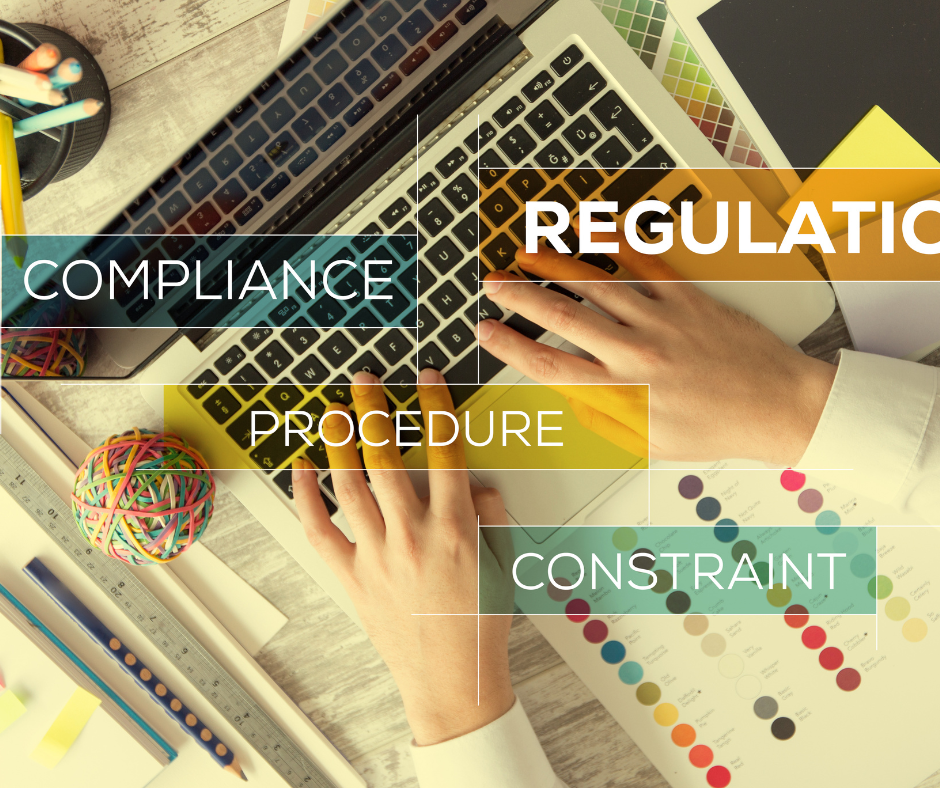
In today’s fast-paced business world, having a well-defined code of conduct is more important than ever. It serves as the backbone of a company’s ethical framework, guiding employee behavior and fostering a positive work culture. But how can you create a comprehensive code of conduct template that reflects your company’s values and ensures compliance with industry regulations? This blog post will guide you through the essential components and steps to craft a professional code of conduct template for 2024, helping you navigate common challenges and misconceptions along the way.
Key Takeaways
- A code of conduct is essential for any organization, as it shapes its culture and values, steers employee behavior, ensures compliance with industry regulations.
- An effective template should include the company’s values & mission statement. Employee expectations & behavior. Workplace policies & procedures. And industry compliance.
- Crafting a successful code requires identifying stakeholders & collaborators. Analyzing past issues/best practices to address ethical concerns. Providing resources/support to ensure adherence when implementing it.
Understanding the Importance of a Code of Conduct
The code of conduct goes beyond merely being a list of rules and expectations. It shapes your company’s culture, steers employee behavior, and fortifies your company values. By clearly outlining the expected behavior and professional standards, a code of conduct can help create a positive work environment where employees feel respected and valued. Additionally, a well-crafted code of conduct ensures compliance with industry regulations and mitigates risks associated with unethical behavior, ultimately protecting your company’s reputation and bottom line.
But what exactly should be included in a code of conduct? This blog post will detail the key components of a compelling code of conduct template while offering insights into developing a document that embodies your company’s values and aligns with industry standards.

Code of Conduct in the Workplace
A well-defined and effectively communicated code of conduct in the workplace is a fundamental element of any thriving organization. The code of conduct in the workplace outlines the expected behavior and ethical standards that employees are required to adhere to while performing their duties. This set of guidelines helps in creating a positive work environment by promoting respect, integrity, and professionalism among team members. Employees are encouraged to maintain open communication, treat each other with fairness and respect, and uphold the organization’s values in all their interactions. Ultimately, a well-structured code of conduct fosters a sense of unity and ensures a harmonious and productive work culture, benefitting both the employees and the organization as a whole.
Key Components of an Effective Code of Conduct Template

An effective employee code of conduct template should include the company’s values, employee expectations, workplace policies, and industry compliance for company employees, as businesses should expect employees to adhere to these guidelines outlined in the legal document.
The upcoming subsections will explore these components in-depth, offering advice on integrating them into your code of conduct template.
Company Values and Mission Statement
Your code of conduct rests on the bedrock of company values and mission statement. They reflect the principles and beliefs that guide your organization’s business conduct, creating a sense of purpose and direction. Explicitly stating these values in the code of conduct establishes the tenor for ethical behavior, making sure employees comprehend their expected actions and their alignment with the company’s values.
Aside from providing guidance on the overall organization’s conduct, the mission statement and company values also play a crucial role in protecting company assets, both tangible and intangible, such as company property, company equipment, and the company’s business reputation. By pledging to be a responsible corporate citizen, your company demonstrates its commitment to enhancing the standard of living in the regions where it operates while ensuring the protection of company property and upholding ethical business practices.
Employee Expectations and Behavior
The code of conduct necessitates a clear outline of expected employee behavior. It helps create a positive work environment by clearly defining acceptable and unacceptable behavior, thus promoting professionalism, honesty, integrity, and ethical standards when dealing on behalf of the company. In this section, you should address issues such as conflicts of interest, misuse of company resources, discrimination, harassment, and other forms of unethical behavior.
To ensure that employees understand the importance of ethical behavior, it is crucial to provide clear examples and scenarios that interest employees and relate to situations they may encounter in their work. This can include guidelines on accepting gifts from clients or partners, taking undue advantage of employment benefits, and adhering to attendance policies. By providing tangible examples, you not only clarify what is expected of your employees but also make it easier for them to recognize and avoid potential ethical pitfalls.
Additionally, outlining the repercussions of code of conduct violations is of utmost importance. This may include disciplinary actions, legal proceedings, and potential damage to the company’s reputation. By clearly communicating the possible consequences, you reinforce the importance of adhering to the code of conduct and help deter employees from engaging in unethical behavior.
Workplace Policies and Procedures
Workplace policies and procedures guarantee consistency and fairness within your organization. They set the stage for a structured work environment where employees know what is expected of them and can rely on a clear framework for decision-making. By detailing these policies and procedures in your code of conduct, you create a cohesive document that addresses all aspects of employee behavior and company culture.
Examples of workplace policies and procedures to include in your code of conduct are dress code, company car policy, and technology use and security. By providing clear guidelines on these aspects, you not only ensure compliance with company policies but also promote a professional and respectful work environment.
Remember that effective communication and training are crucial for the successful implementation of your workplace policies and procedures, so make sure to provide employees with the necessary resources and support to understand and adhere to these guidelines.
Industry Compliance and Regulations

Compliance with industry regulations forms a pivotal aspect of any code of conduct. By addressing these regulations in your code, you ensure that your company operates within the boundaries of the law and upholds ethical and responsible conduct. Employees must adhere to all applicable laws and regulations, both explicitly and implicitly, in all territories in which the company operates.
It is essential to regularly review and update your code of conduct to ensure compliance with any changes in industry regulations and governmental laws, including fair dealing laws. This includes addressing issues such as environmental protection, safety, and fair dealing. By staying up-to-date with industry requirements, you not only protect your company from legal liability but also demonstrate your commitment to ethical business practices.
Code of Conduct Examples
When considering the implementation of a code of conduct within an organization or community, it’s crucial to review various code of conduct examples for guidance and inspiration. Examining diverse code of conduct examples from different industries and settings can provide valuable insights into effectively addressing behavioral expectations and fostering a positive environment. These code of conduct examples often cover aspects such as respect, inclusivity, communication, and consequences for violations. By studying and adapting code of conduct examples to specific contexts, organizations can tailor their guidelines to meet the unique needs and values of their community. Moreover, utilizing real-life code of conduct examples can help in the formulation of clear, actionable, and meaningful guidelines that contribute to a culture of mutual respect and collaboration.
Crafting Your Code of Conduct Template

Having discussed the critical components of an effective code of conduct template, we’ll now delve into the steps to formulate your unique version. This involves identifying relevant stakeholders, analyzing previous ethical issues, and finalizing the document.
The subsequent subsections will guide you through each step, aiding you in devising a holistic code of conduct that mirrors your company’s values and adheres to industry standards.
Identifying Stakeholders and Collaborators
Engaging key stakeholders, external or internal party, and collaborators in the evolution of your code of conduct secures diverse viewpoints and thorough coverage of all pertinent issues. This may include management, long-term employees, and representatives from various departments within your organization, as you can expect team members to provide valuable input.
By consulting with these stakeholders, you can gather valuable insights into the company’s culture, values, and background, as well as identify potential ethical challenges and areas of concern that need to be addressed in your code of conduct. Encourage open communication and provide training to guarantee understanding and alignment among all stakeholders.
This collaborative approach not only ensures that your code of conduct is:
- relevant
- feasible
- fosters a sense of ownership and commitment among employees
- increases the likelihood of successful implementation.
Analyzing Past Ethical Issues and Best Practices
Past ethical issues can provide valuable lessons and insights that help inform the creation of your code of conduct. By examining these issues, you can identify common patterns, vulnerabilities, and areas of concern that need to be addressed in your code. This allows you to establish guidelines and policies that promote ethical behavior, prevent misconduct, and protect the interests of stakeholders.
Moreover, studying past ethical issues can help you understand the consequences and impact of unethical behavior, serving as a deterrent and reinforcing the importance of ethical conduct. By learning from past mistakes and incorporating best practices, you can create a comprehensive and effective code of conduct that addresses both current and potential ethical challenges.
Finalizing and Implementing the Code of Conduct
After every stakeholder has had the chance to contribute and you’ve scrutinized past ethical issues, you can proceed to finalize your code of conduct. Carefully review the document to ensure that it accurately reflects your company’s values, addresses all relevant ethical concerns, and complies with industry regulations.
Implementing your code of conduct is equally important as crafting it. Effective implementation involves:
- Training and education
- Communication and awareness campaigns
- Leadership commitment
- Monitoring and enforcement
- Integration into company culture
By providing employees with the necessary resources and support, you can ensure that your code of conduct is not only understood but also consistently adhered to across your organization.
Conducting Business
To effectively conduct business, it is essential to adhere to established ethical principles and legal guidelines. The way you conduct business reflects your organization’s values and integrity. Ethical conduct in business involves treating customers, employees, and stakeholders fairly and honestly. When you conduct business ethically, you build trust and credibility with your clientele, which is crucial for long-term success. Moreover, businesses that consistently conduct themselves with high ethical standards often experience improved brand reputation and increased customer loyalty.
Navigating Common Challenges and Misconceptions

A prevalent misunderstanding during the creation of a code of conduct arises from confusing it with a code of ethics. While both documents serve to guide employee behavior and promote ethical standards, they differ in their scope and focus. A code of ethics is a high-level guide to the company’s values and morals, while a code of conduct provides more specific regulations and policies concerning wider beliefs.
To evade ambiguity and establish clarity, defining the purpose of your code of conduct and expressing it lucidly throughout the document is crucial. Providing examples and scenarios, as well as training and education, can help clarify the purpose and expectations of your code of conduct, ensuring a comprehensive understanding among employees.
Monitoring and Updating Your Code of Conduct

Frequent monitoring and updating of your code of conduct are vital to maintain its ongoing relevance and effectiveness. Here are some important reasons for keeping your code up-to-date:
- Compliance with regulations
- Reflecting company values
- Addressing ethical issues
- Providing employee guidance
- Managing reputation
To ensure effective monitoring, consider soliciting feedback and input from stakeholders, demonstrating commitment and support from management, and customizing the code to be organization-specific. Periodically review and update your code of conduct to guarantee its pertinence and effectiveness, with a recommended frequency of at least once every two years.
Summary
Creating a comprehensive code of conduct is a critical task for any organization, as it not only guides employee behavior but also promotes a positive work environment and upholds ethical standards. By understanding the importance of a code of conduct, identifying its key components, and following the steps outlined in this blog post, you can craft a professional code of conduct template that reflects your company’s values and ensures compliance with industry regulations. Remember, regular monitoring and updating are crucial for maintaining your code’s relevance and effectiveness, ultimately contributing to your organization’s success.
Frequently Asked Questions
How do you write a simple code of conduct?
Craft a statement of values to outline expectations and ensure everyone is on the same page. Include who is covered, compliance with laws, rules and policies for respect, use of company property, personal appearance, absenteeism and lateness, disciplinary actions, and an anti-harassment policy. Ensure visibility by communicating the code of conduct to all stakeholders.
What are the 5 codes of conduct?
The five codes of conduct are Integrity, Objectivity, Professional competence and due care, Confidentiality, and Professional behaviour – all of which aim to uphold ethical standards in professional and business relationships.
What is the format of a code of conduct?
A code of conduct typically includes an organization’s values, business principles, standards of practice and disciplinary actions. It outlines how employees should behave to reflect the organization’s mission, as well as provide clear regulations related to internal practices such as dress code or break policy. These regulations are important for maintaining a professional and respectful workplace. They also help to ensure that employees are aware of their rights and responsibilities, and that they are held accountable for their actions. Additionally
What is the main purpose of a code of conduct?
The main purpose of a code of conduct is to guide employee behavior, promote company values, ensure compliance with industry regulations and mitigate risks.
What is the difference between a code of ethics and a code of conduct?
A code of ethics provides a broad overview of an organization’s values and morals, while a code of conduct outlines the more specific regulations and policies regarding those beliefs.